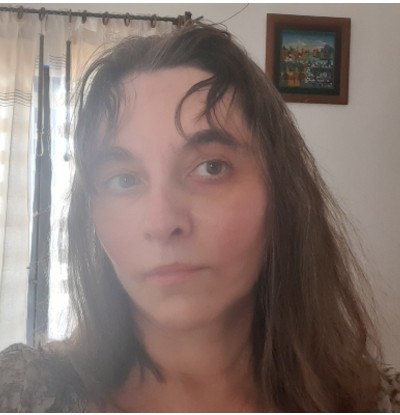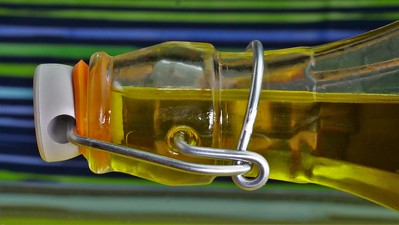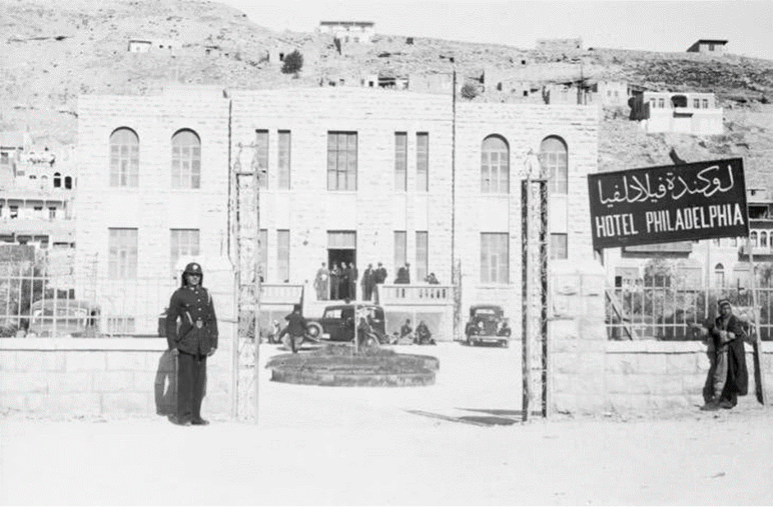By NINA KOSSMAN
Nina Kossman is a finalist for the Restless Books Prize for New Immigrant Writing.
Nina Kossman’s Family Dictionary of the Twentieth Century is a lyrical, panoramic exploration of a family tree shaped by the cataclysms of history. In this assemblage of memories, Kossman exhumes displaced, forgotten, and buried family stories in order to make whole what has been scattered and destroyed by Nazism and Stalinism, while also attempting, through her devotion to her Russian émigré parents, to keep whole the family that still lives. In the tradition of W. S. Sebald, Nina Berberova, and Natalia Ginzburg, Kossman probes questions of “outsider”-ness within one’s own immigrant communities and friendships, plumbs the subconscious, and maps the incomprehensible scale of twentieth-century events and the intimate inheritance of its traumas. These vignettes in Family Dictionary of the Twentieth Century—these entries—build to an immensely moving conclusion about what it means to be the carrier and keeper of a family’s history.

Some 14 years ago I wrote to the Latvian archives, asking them to send me anything they could find on my family, and after several months of waiting, I got more than I had expected. Among many other things, I received my father’s report card from his German high school, Statdtische Deutsches Gymnasium zu Riga, for the year 1929. Apparently, this was not the best school year in my young father’s life, as we can see from his grades on this handwritten report card. Compared to the grades he received in elementary school, where he had been considered one of the best students, “genugend” (satisfactory), the grade he got in almost all subjects in 1929, was seen as a “bad grade”.
The handwritten report card tells us that my fourteen-year-old father got “genugend” (satisfactory) in all subjects except “gesang” (singing) and “Geschchte” (history), for which he got “sehr gut” (“very good”). He got “Genugend” in Lettisch (Latvian language), Deutsch (German), Franzosisch (French), Erdkunde (Geography), Mathematic (math), Naturkunde (Natural History), Physic (Physics), Zeichnen (Drawing), Turnen (Gymnastics), and in another subject, on the very bottom of the report card, which I can’t quite make out.
As far as I know, my father was a perfect student in his elementary school, where he had “sehr gut” (very good) or “ausgezeichnet” (excellent”) in all subjects, but his grades became less stellar in high school. I remember him saying that his years at the “gymnasium” were much more complicated than those at the elementary school because he had disliked being in the German high school, where he was only one of two Jewish students in his class. My father grew up in a very assimilated family; German was the primary language at home, Russian the second language, and Latvian the third, but unlike German and Russian, Latvian was used outside of home, not inside. As far as I know, my father didn’t have any specifically Jewish education, and his Jewish identity, such as it was, was pretty much non-existent until he found himself in the German high school, where he was one of only two Jewish students in his class; all the other students were ethnic Germans. Seven years after their graduation, most of my father’s German classmates and their parents were forced to accept Hitler’s so called “Volksdeutsche” invitation and migrated to Germany, many of them losing everything they had, including of course, their homes in Latvia, where their Baltic German ancestors had lived for generations.
In the German high school, my teenage father was surrounded with students whose German identity was just beginning to undergo radicalization because of the events in Berlin, and it was their growing self-radicalization as Volksdeutsche that made him become aware of his “otherness”, i.e., his Jewishness. As a result, he joined two associations of Jewish high school students. In both of these organizations he was extremely active. The first was VJSG (Verein Judischer Stadtische Gymnasiaten —Association of City High School Students), whose members were Jewish students of all Riga high schools. Their meetings, or sessions, took place once a week, and that’s where my teenage father met other people his age, who had been confronted with similar problems in their schools. Each participant had to give a presentation once a month or once in several months, and each lecture was followed by passionate and detailed discussions. My father had been so active in VJSG that at the end of his first year he was invited to join the VJSG council, a kind of governing body of the organization. At the same time, he participated in weekly meetings of the Student Zionist organization “Aviviya.” Members of Aviviya were only male students, and their learning centered on self-defense and the history of Zionism. The studies were taken very seriously and at the end of the year each participant had to pass an examination on the history of Zionism. When my father and his friend Paul Grollman had realized that the goals of Aviviya no longer worked for them and decided to leave the organization, Aviviya council declared them “traitors” and forbade its remaining members to speak to them.
I remember my father saying, “Though it happened more than 70 years ago, I still remember many boys and girls who are now – if they are still alive – in their eighties. I recall a 14-year-old girl who started her speeches by declaring, ‘We women!’” My father was eighty-six when he said this.
His active participation in both of these organizations made his success at the German high school somewhat questionable. Almost every week he asked his mother to write notes with all the usual excuses (headache, stomachache, etc.), so he could stay home and prepare for his reports at the VJSG meetings or for Aviviya classes. It came to a head when my grandmother had been summoned to a meeting with his classroom teacher from whom she heard the harsh truth, i.e. that as a result of cutting classes, my father was no longer among the school’s best students.
When Hitler came to power on January 30, 1933, my father was in the last year of his Latin gymnasium and was expected to graduate in six months.
He told us about a particular incident in his history class in April 1933. Although Latvia was an independent country, all teachers as well as the head master in my father’s high school were ethnic Germans, and they took Hitler’s rise to power in Germany very personally, although perhaps “personally” is not the right word here, as welcoming Hitler’s victory in the German elections was the official line of the school’s German administration. I don’t remember all the details of what happened in my father’s history class, as I was quite young when he told us about it. All I remember is that my father and his friend Rudi Salgaler, the only other Jewish boy in his class, remained in their seats when their history teacher, Herr Knorr, demanded that all students rise in solidarity with the boycott of Jewish stores in Berlin. Before this incident, or more precisely, before Hitler’s rise to power, my father was on good terms with Herr Knorr, who had discussed politics with my young father, thus singling him out of the rest of the class. At the age of sixteen, my father was so naïve that he thought of himself as an anarchist, and Herr Knorr, apparently, kindly tried to dissuade him from this line of thinking. With Hitler’s rise to power, all conversations between the student and the teacher came to a sudden and disappointing end. I say “disappointing” because that was the word my father used when he was telling us about this teacher, whom he apparently admired before this sudden change. After my father told his friends about what had happened in his history class, he and Rudi Salgaler, the other Jewish boy, were summoned to the headmaster’s office, where they were told that Herr Knorr’s demand that students rise in honor of the boycott of Jewish stores and the two Jewish students’ refusal to do so had been reported to the official representatives of German culture in Latvia. The headmaster not only wanted to know whether my father and Rudy had told anyone about the incident, but he made it clear that if they had, they would have serious problems at their final exams.
Another teacher I remember my father telling us about was Herr Mahssing, who taught German literature. Herr Mahssing spoke very highly of Heinrich Heine before the winter holidays, i.e. back in 1932. After Hitler had been named chancellor on January 39, 1933, Herr Mahssing seemed to have forgotten that less than two months ago he had referred to Heine as “one of the greatest German poets ever”. After January 30, 1933, Herr Mahssing tried not to mention Heine at all, and those few times when he did, he invariably referred to him as “that miserly Jewish poet who had an extremely bad influence on Germany’s intellectual world” and “that non-German poet whose only accomplishment was the undermining of his readers”. When my father had passed his final exams in June 1933, he was relieved that this chapter of his life was finally over and that from now on he would have nothing to do with the world of pro-Nazi Baltic Germans. From our vantage point in the far-off future, we know that his relief was premature; he certainly couldn’t have imagined what was yet to come.
Nina Kossman is a Moscow-born bilingual writer, poet, translator of Russian poetry, painter, and playwright. Among her published works are three books of poems in Russian and in English, two volumes of translations of Marina Tsvetaeva’s poems, two books of short stories, an anthology she put together for Oxford University Press, several plays, and a novel. Her work has been translated into French, Greek, Japanese, Spanish, Italian, Hebrew, Persian, Danish, and Dutch. Her Russian poems and short stories have been published in major Russian literary magazines in and outside of Russia. Several of her plays have been produced off-off Broadway and in London, and her poems appeared in major anthologies, such as Gospels in Our Image, Gods and Mortals: Modern Poems on Classical Myths, 101 Jewish Poems for the Third Millennium, etc. She is a recipient of a UNESCO/PEN Short Story Award, an NEA fellowship, and grants from Foundation for Hellenic Culture, the Onassis Public Benefit Foundation, and Fundación Valparaíso. She lives in New York.
Read more excerpts by the finalists for the Restless Books Prize for New Immigrant Writing.




